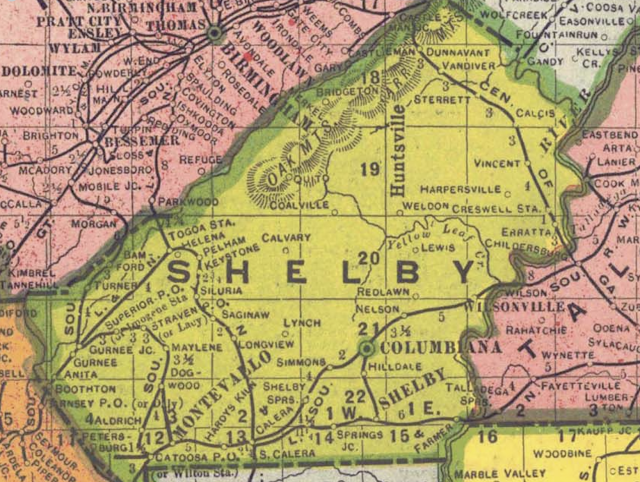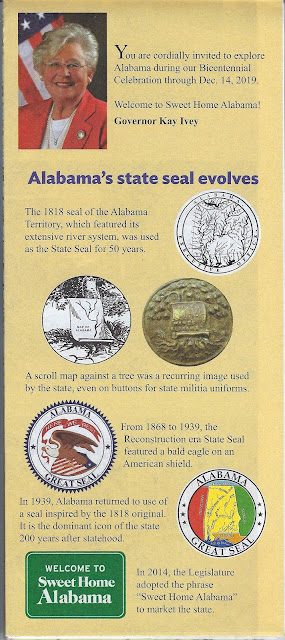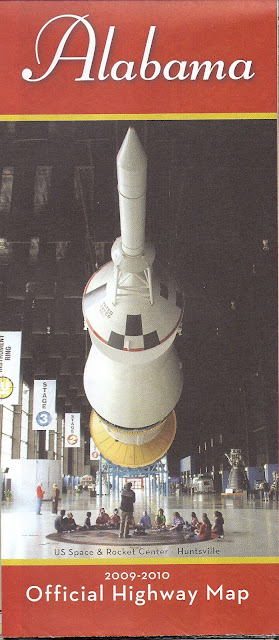I've done a number of posts on this blog about various maps, usually related to Alabama, Shelby County or Pelham. One of these days I hope to do a piece linking all those items together. In the meantime, here's another one...
This post is the fourth featuring those "Official Highway Maps" of the state you can get for free from the state travel website or pick up at welcome centers or rest stops. I love these maps with their colorful covers; and when you open them up, you have a huge detailed map of the state.
In the first entry in this series I covered maps from 1976 until 2009-10. Images included the Space and Rocket Center, Barber Motorsports Museum, a statue in Tuskegee, bike riders, the state coat of arms, a beach or two and much more. Images in the second post covered the Gorgas House in Tuscaloosa, Sturdivant Hall in Selma, the Alabama Shakespeare Festival, Birmingham Museum of Art, a different Space and Rocket Center photo, Birmingham Museum of Art, and others, including beaches. The dates in that post ranged from 2004 to 2021-22. Just for fun I also included a 1974 state map from Texaco and a railroad map issued by the state.
In the early days the back cover might include examples of road signs or in at least one case just "HELP" which could be put on your dashboard. However, most back covers feature the governor at the time and that practice continues today. The third post focused on a 1973 map I came across, with George Wallace on the back. I'm not sure when the state started creating these particular kinds of maps.
So now we come to the latest highway map covers, and here they are....































































